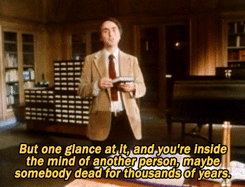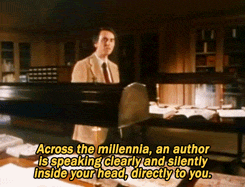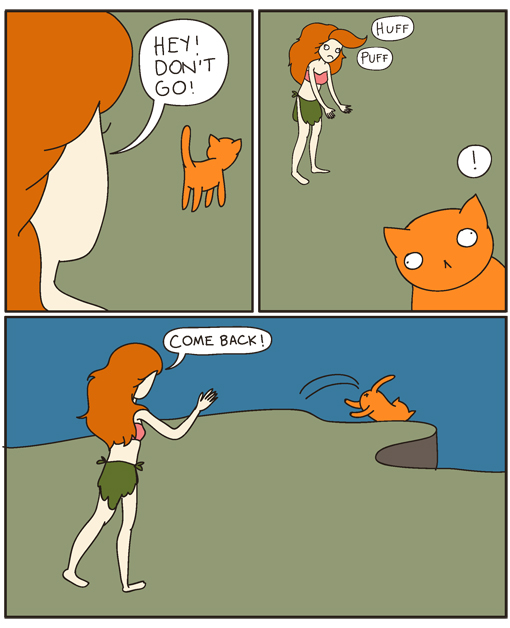Shared posts
Learning to Cope With the Noisy Clatter of Traveling
billtron#soundstudies
#getoffmylawn
Edible Topography
From inner-city food deserts to car-centric suburbs, aspects of the physical environment are frequently cited as a contributing factor to the rise of obesity in the developed world. However, new research, published earlier this year in the International Journal of Obesity and summarised online at the Public Library of Science (PLOS) blog, Obesity Panacea, found a surprising correlation between elevation and obesity in the United States.

IMAGE: Above, a topographical map of the USA, from the USGS National Elevation Dataset; below, a Centers for Disease Control map showing age-adjusted obesity prevalence by county.
As the paper’s lead author, Dr. Jameson Voss of the Uniformed Services University of the Health Sciences, points out, mapping obesity prevalence in America reveals distinct, and hitherto unexplained, geographic variations:
Obesity appears most prevalent in the Southeast and Midwest states and less prevalent in the Mountain West. Despite significant research into the environmental determinants of obesity, including the built environment, the explanation for these macrogeographic differences is unclear.
Intriguingly, those areas in which less than a quarter of the population is obese map almost exactly onto the more mountainous regions of the country—the Appalachians, the Rockies, and the Sierra Nevada. And, indeed, after controlling for diet, activity level, smoking, demographics, temperature, and urbanisation, Voss and his colleagues found “a four- to five-fold increase in obesity prevalence at low altitude as compared with the highest altitude category.”
To repeat: Americans who live less than five hundred metres above sea level are more than five times as likely to be obese as their counterparts who live at or above 3,000 metres — even when diet, physical activity, and socio-economic status are all taken into account. Mountain-dwelling Americans, Voss found, weigh in a full 2.4 points lower on the Body Mass Index, on average, than their lowland compatriots.
Voss himself admits to being surprised at the magnitude of the correlation, and he cautions that correlation does not prove causation. However, he does note that a handful of other studies have also demonstrated a link between differences in elevation and body weight.
Among 617 Tibetans, waist circumference, waist-to-hip ratio and BMI were inversely related to elevation, in a range from 1200 to 3700 m above sea level. Similarly, in an endogamous Indian population, women living in the plains were overweight, whereas those living at elevations above 2400 m were of normal weight. Similarly, dogs were found to have lower rates of obesity in the Mountain West than in lower elevation areas of the United States.
He also points out that clinical trials, in addition to observational studies, have shown that hypoxia (due to a reduced oxygen supply, as is the case at altitude) can cause weight loss. Indeed, hypoxia has been demonstrated to induce anorexia in obese rats.
The physiological mechanisms and evolutionary reasons behind this are complex and still somewhat uncertain: Voss speculates that “protection against obesity in hypoxic environments may be biologically adaptive, whereby hypoxia alters the near term survival tradeoff between the benefit of increased energy storage and the cost of excess body weight.”

IMAGE: The Woodmen Sanitorium, complete with individual cabins shaped like teepees to maximise air circulation, Colorado Springs, Colorado. Photograph courtesy the Colorado Springs Pioneers Museum, via The Colorado Springs Gazette.
Of course, this not the first time that topography has been proposed as therapy in the face of an intractable epidemic. Before the discovery of the antibiotic streptomycin, doctors used to prescribe a “mountain cure” for tubercular patients, in the hopes that an extended spell in the clean, cold air would help heal their diseased lungs. In the early twentieth-century, there were seventeen sanatoriums in the Pikes Peak region of the Rocky Mountains alone, to the extent that, in Colorado Springs, according to the director of the local history museum, “Tuberculosis was our industry.”
Given the implications of Voss’s study, it seems as though mountainous regions may be able to promote themselves as health resorts once again, luring in those for whom WeightWatchers, Atkins, and the 5:2 regime have all failed.
Perhaps doctors will offer their morbidly obese patients the option of relocating to Denver or Boulder, in lieu of a gastric bypass. Or, more likely, health insurers, already reeling from the burden of America’s obesity epidemic, will reimburse customers for the installation of a domestic altitude simulation chamber, such as those currently marketed to elite athletes by companies such as Hypoxico, that “allows you to work or sleep at the altitude of your choosing in the comfort of your home.” Meanwhile, during the day, a mask and wheeled hypoxic generator mean that you can bring the mountains with you.

IMAGE: An at-home Hypoxico chamber, adjustable to 3,800 metres of simulated altitude.
The virtual elevation of an entire nation: the next step in anti-obesogenic design?
Supersonic Stereo
Supersonic Stereo
What if you somehow managed to make a stereo travel at twice the speed of sound, would it sound backwards to someone who was just casually sitting somewhere as it flies by?
—Tim Currie
Yes.
Technically, anyway. It would be pretty hard to hear.
The basic idea is pretty straightforward. The stereo is going faster than its own sound, so it will reach you first, followed by the sound it emitted one second ago, followed by the sound it emitted two seconds ago, and so forth.

The problem is that the stereo is moving at Mach 2, which means that two seconds ago, it was over a kilometer away. It’s hard to hear music from that distance, particularly when your ears were just hit by (a) a sonic boom, and (b) pieces of a rapidly disintegrating stereo.
Wind speeds of Mach 2 would messily disassemble most consumer electronics. The force of the wind on the body of the stereo is roughly comparable to that of a dozen people standing on it:

An ordinary stereo wouldn’t make it, but one with some kind of ruggedized high-strength casing might be able to survive.
If we put together a durable, heavy-duty stereo and launch it on a ballistic trajectory, it will only be traveling at supersonic speeds for the first 150 meters or so. This means that the target will hear a maximum of about a third of a second of reversed music.
This phenomenon is actually confirmed in the 2008 paper Reproduction of Virtual Sound Sources Moving at Supersonic Speeds in Wave Field Synthesis, which says that the sound wave field “contains a component carrying a time-reversed version of the source’s input signal”.
The sonic boom would be the first thing the target would hear. It would be followed by several sounds played over one another, including both reversed music (rising slightly in pitch as it fades out) and forward-playing music (which would play at half speed and an octave too low), followed by the crash of a stereo demolishing your neighbor’s shed.
Which means that if you’re playing one of those albums containing secret demonic messages, the result will be the strangest listening experience of your life:

Worldbuilding and world-extending: Discoveries and questions
I kicked off this week with a big, messy post about, basically, fan fiction. Now that I’ve talked it through a bit with my incredible fellow seminarians, I think my questions boil down to: What are the aspects of a creative text that are most conducive to fostering fan fiction? and How do those attributes translate to nonfictional domains?
Here are the boundaries I’ll draw around my curiosity:
- I’m more interested in creative responses to discrete creative works (e.g. this in response to this) than I am in creative stuff made with creative tools (e.g. this built with this). That is to say, I’m less interested in the general phenomenon of people building things with games or tools that are about building things (e.g. what makes Legos so conducive to worldbuilding?).
- I’m more interested in the wealth (in all dimensions) of responses a work produces than in the inherent creativity of the work itself — the world built on top of or in response to a thing, rather than the world of the thing.
- I’m (ultimately) most interested in how these attributes of creative works apply outside the most familiar domains of fan fiction such as fantasy fiction, Star Wars, etc. I’m curious, for example, how one makes nonfiction that produces fan-nonfiction.
Some familiar examples of the types of creative responses that strike me as fitting into my framework of what I’ll call “world-extensions” are modding (EG), fan fic (EG), and cosplay (EG).
Some of the more unfamiliar examples that strike me as possibly alike enough to cluster with these things are:
- An interplay of visual artworks, like the Picasso and American Art exhibit, and particularly the range of artistic extensions of / responses to “The Studio.” (Including Picasso’s own extensions of that artwork.)
- Op-eds and punditry in major national newspapers and the sort of mirror-world that pundits fashion in concert with one another. (Thanks, Robin!)
- Parody Twitter accounts, like @MayorEmanuel.
- Wikipedia.
- Memes.
Lastly, here are some of the nascent hypotheses I’m forming about aspects of a work that can help bring about world-extending:
- Expansiveness and/or continuity: The world should feel big and open enough that folks feel there’s room to play with it.
- Strong, recognizable systems: The rules and boundaries of the world should feel solid enough to provide a common structure to any world-extensions.
- Focus and blurriness: It seems important that there are areas of the world drawn in fairly vivid detail, but also aspects of the world presented only suggestively. Things to grab onto, and things to fill in.
- Fandom: This kinda goes without saying, but the work needs to have enough attractions that a critical mass of folks will fall in love with it.
There are a few other dimensions I haven’t reached the hypothesis stage for:
- What’s the effect of otherworldliness? Are works of fantasy more conducive to world-extending than works based more solidly in reality?
- How much of world-extension is related to things such as age and gender? We all seem particularly interested in extending worlds when we’re young; does the desire dissipate as we get older and busier?
- What about the degree of user/reader/watcher/listener investment in the text? To inspire fan-fiction, is there possibly a sort of attentional summit that, once ascended, begins to tunnel the person deeper and deeper into the world of the text?
Today and tomorrow, I’ll be crashing the #worldbuilding tag on Twitter to explore some of these questions. Do join me!
Social hierarchy in elevators
billtronReminds me of 1950s sociological studies of subway passengers.
Human behavior in elevators is endlessly fascinating and so is this tidbit about social organization in elevators from an ethnographic study of elevator users.
Yet, moving back to the interaction with elevator interior design elements, it was noticed that interaction went hand-in-hand with social organisation. As a result of 30 elevator journeys (15 in each building) a clear social order could be seen regarding where people positioned themselves inside the elevators and how they interacted with the design features, such as mirrors and monitors. More senior men in particular seemed to direct themselves towards the back of the elevator cabins. In front of them were younger men, and in front of them were women of all ages. Men watched the monitors, looked in the side mirrors (in one building) to see themselves, and in the door mirrors (of the other building) to also watch others. Women would watch the monitors and avoid eye contact with other users (unless in conversation) and the mirrors. It was only when the women travelled with other women, and just a few at that, that women elevator users would utilise the mirrors. One interviewee even mentioned that she only looked in the mirrors when there was no one else in the elevator.
(via @triciawang)
Tags: elevatorsDaft Punk to launch new album at local farm show
I have checked the publication date on this story ten times and it's not April 1st, so I guess Daft Punk really is launching their new album at a farm show in the small town of Wee Waa, Australia.
Tags: Daft Punk musicAttached To A Cat
email 1999
“Sometimes I feel as if I went a step too far, walked too far ahead of myself. I think in the end that’s how it feels to get older. You look around, you feel exposed, as if it would be better to give the rest of your life time to catch up. But it doesn’t. You’ve outstripped it, somehow. Not by reinventing yourself, which is the usual source of this feeling, or by outgrowing yourself, or shedding any kind of skin: but simply by outdistancing the greater part of yourself. It’s not too late, you imagine: that part of you could still catch up. But it never will. You’ll always be waiting, hanging back, having a rest, giving it a chance, but it will only lose ground further. Older people have a ruthlessness because of this, not so much a lack of compassion as a very clear idea of what they want.”
Getting Back to Knopf
It is always a bit of a shock to learn about a small company obsessive over a pursuit that seems like something out of the past—a craftsperson's obsession—that is able to turn a profit and keep up to forty people gainfully employed at any given time. Stinehour Press evolved out of a small commercial printing operation that served a community. After Rocky's introduction to printing he came to Dartmouth and trained in design. His great contribution was an unfailing belief that good design and attention to detail could be done economically and that good design did not need to be sacrificed for profit. Alfred Knopf had expressed a similar idea years earlier, when he said that a well-printed and well-designed book could be produced almost as inexpensively as most commercial books. The Stinehour Press carried that theory through five decades of quality printing and design including this work for Knopf.
To learn more about Rocky and his legacy, come hear David Godine '66, on Thursday, April 11 at 4:00 in Baker Library. There is also an exhibit in the Baker Library Main Hall, Designed and Printed at Stinehour Press, that is on display through May 31st.
“The Way of the Samurai is found in death. Meditation on...

“The Way of the Samurai is found in death. Meditation on inevitable death should be performed daily.”
http://www.catversushuman.com/2013/03/blog-post.html
The Best Vinegar to Use in Cooking?
billtronthorough!
I‘m publishing a little earlier than normal this week because I’m off to Melbourne for a few days. Super excited to be visiting one of my dearest friends, Missy Helgs and her adorable 4 week old daughter Fleur.
Really looking forward to both of them giving me a crash course in how to look after a newborn. An area where I have A LOT to learn! And of course it’s a great chance to try a few new Melbourne hot spots before I enter the new parent fog.
Anyway back to the normal Stonesoup programming….
One of my goals for Stonesoup this year is to spend more time talking about topics that you are interested in.
So I’ve set up a survey to capture your questions and I’ve also started keeping a notebook in my Evernote account to keep track of questions that come in via email.
One of the most common questions I get asked came most recently from John…
“Where do you get the sherry vinegar? I heard Jamie give it a plug about a year ago but haven’t been able to find it. Now you mention it.”
Now I LOVE vinegar and could happily talk about it all day, so I now have the perfect excuse to dedicate a whole blog post to my favourite vinegars. Thanks John!
My favourite vinegars
Normally I don’t like to play favourites with my ingredients but for some strange reason when it comes to vinegar I have a clearly defined hierarchy…
1. Sherry Vinegar
This is my desert island vinegar. If I could only have one vinegar, like I did when I was living in New York for a month, sherry vinegar would be it.
Why do I love it so much?
I find sherry vinegar has the perfect balance of acidic flavours without being too harsh or chemically. While I’m happy to eat sherry vinegar by the spoon, I find red or white wine vinegar overpowering and too much.
So basically it adds the right type of acidity and freshness to food without turning it into a vinegar fest.
2. Rice Vinegar (aka Rice Wine Vinegar)
Rice vinegar comes in a close second because it’s really similar to sherry vinegar in terms of adding freshness without the overpowering chemically acidity found in white and red wine vinegar.
And if you’re wondering, as far as I know Rice Vinegar and Rice Wine Vinegar are the same thing. Adding the ‘wine’ to the name is just a marketing ploy to make it sound more ‘fancy’.
3. Balsamic Vinegar
It’s sweet, it’s intense. What’s not to love about balsamic. I currently have 3 balsamics in my pantry (not very minimalist of me!). One cost more than a bottle of perfume and I use it sparingly to drizzle on things for special occasions.
The next cost about $25 and it’s my go-to vinegar when I want to make a dressing with a bit of sweetness. I usually mix up 1 tablespoon of this balsamic with 2-3 tablespoons extra virgin olive oil, depending on how intense I want my dressing to be. I also use this one for drizzling on less special occasions.
And then I have a cheap supermarket balsamic I use when I want to cook with it. This tends to be things like a hearty beef or lamb slow cooked dish. But I sometimes use it to deglaze a pan to make an instant sauce.
4. Cheap White Vinegar
Essential for keeping my morning poached eggs in good shape. And anytime you want a huge acid hit from an inexpensive source.
Other Vinegars
I also have a caramelised red wine vinegar which is basically a ‘poor girls balsamic’. Much sweeter and less interesting than balsamic. But fun for a change. I tend to use some soy sauce when making a dressing with this to add complexity and depth and to balance the sugar.
Chinese black vinegar or Chinkiang vinegar is something I picked up when my Irishman was going through his kung pow chicken phase. I do love the salty intensity but it’s not something I think to reach for very often which probably explains why the bottle is still quite full.
I pick up a bottle of apple cider vinegar every now and then. It has similar intensity to sherry or rice vinegar but for some reason, I can’t put my finger on, I don’t like it as much.
I can’t remember the last time I had a bottle of red, white or even champagne vinegar in the house. If they work for you, great! But I find they’re never as nice as my sherry vinegar.
How I use vinegar
If you’re only using vinegar to make salad dressings you’re in for a treat… There’s so much more you can do with vinegar.
After salt, vinegar is my second favourite ingredient to add when I’m ‘seasoning’ my food.
One of the things I learned when I was a winemaker was the importance of acidity in how things taste. Winemakers spend hours (I’m not kidding) messing around with different pH levels and different types of acid which inspired me to start using acid and vinegar more thoughtfully in the kitchen.
When I’m tasting a dish to season it, I ask myself whether it needs more salt OR does it need a little vinegar?
Salt is great for enhancing flavours but vinegar has the ability to really freshen things up and bring everything to life. If you’d like to learn more about this, we cover it in depth in my online cooking classes at the Stonesoup Virtual Cookery School.
So I’m often reaching for the vinegar bottle when I’m seasoning a stew or soup or a dish like the sausages and lentils below.
Where I buy my vinegar
My sherry vinegar and balsamic come from my favourite deli. And the super expensive balsamic comes from Fratelli Fresh in Sydney. With sherry vinegar I’ve found you get what you pay for, so choose the most expensive one you can afford.
With balsamic it’s not so simple. I’d recommend going with a mid-priced balsamic first and then branching out to more expensive if you’re up for it. Supermarket balsamic can be OK but I find it’s worthwhile getting some from a deli, especially to use for salad dressings.
My local supermarket stocks an excellent rice wine vinegar in the Asian section. But depending on where you shop, you may need to go to an Asian grocery store. The great thing is it’s very inexpensive compared to the quality.
And of course my cheap white vinegar is another supermarket buy.
What about you?
Are you willing to take my vinegar challenge and branch out and try something new?
Pickup a bottle of a new vinegar for you and share your results in the comments below. I’d love to hear what you think…
Quick Sausages & Lentils
In our house we LOVE a good sausage. And over the years I’ve learned that there is a massive difference in quality between a sausage made with excellent ingredients and love and your super cheap supermarket sausage.
So if you think you aren’t a sausage fan, I challenge you to take the time to find a butcher who makes their own and takes pride in their bangers. Trust me, it will be like discovering a whole new ingredient. And the best thing, even super fancy bangers are reasonably priced compared to most meats.
Enough for 2
3-4 good quality pork sausages
250g (9oz) cooked lentils or 1 can, drained
1 tablespoon sherry vinegar
1 tablespoon soy sauce
1 bunch flat leaf parsley, chopped
1. Heat a little oil in your frying pan. Remove sausage from their casings and crumble the meat into the pan.
2. Cook on a highish heat, stirring every now and then for a few minutes or until sausages are well browned.
3. Add lentils, vinegar and soy. Stir and keep cooking until everything is hot and the sausages are cooked through.
4. Remove from heat. Taste and season with extra soy or vinegar if needed. Sprinkle over parsley.
VARIATIONS
not a sausage fan? – replace sausages with ground (minced) meat. Pork, veal, beef or lamb would all be fine.
different lentils – I’ve used home cooked French-style or Puy lentils, but you could use canned lentils. Red or brown lentils will also work, just be careful you don’t overcook them as they like to turn into a mush. The best way to cook lentils is to add to a big pot of cold water then simmer until they’re tender, about 15 minutes for red or green lentils, longer for brown).
soy-free – skip the soy sauce and season with salt instead.
vegetarian / vegan – Skip the sausages and double everything else. Warm the lentils and season with the soy and vinegar. Serve with a generous handful of roasted nuts for extra protein and crunch.
Video version of the recipe.
5-Ingredients 10-Minutes BONUSES!
It’s been a white since I mentioned my new print book which is NOW AVAILABLE in good bookshops in the UK and Australia.
A HUGE thank you to you if you’ve purchased one (or more!) copies. I really appreciate your support.
If you haven’t picked up a copy yet, what are you waiting for? Order online from amazon.co.uk and bookdepository.co.uk (my favourite book supplier because they have FREE shipping anywhere in the world!).
To make sure you don’t miss out go to:
www.5ingredients10minutes.com/
With love,
Jules x
The Racialicious Links Roundup 4.11.13
- Rand Paul Goes To Howard (The New York Times)
The same week that a dozen defiant senators threatened to filibuster any new gun control legislation, Paul ventured across Washington to historically black Howard University and gave a speech aimed at outreach and bridge building.
The man is mulling a presidential run after all.
The speech was a dud. It was a clipped-tail history lesson praising the civil rights record of the pre-Southern Strategy Republican Party, while slamming the concurrent record of the Democrats.
It completely ignored the past generation of egregious and willful acts of insensitivity by the G.O.P. toward the African-American community.
“We are not expecting LGBT families to be included in the Gang of 8 [sic] bill,” Immigration Equality director Rachel Tiven told the Washington Blade yesterday. “That in our minds means that of course the bill is incomplete.”
In January, the White House urged Congress to include same-sex couples in legislation. Its proposal on immigration reform recommended “[treating] same-sex families as families by giving U.S. citizens and lawful permanent residents the ability to seek a visa on the basis of a permanent relationship with a same-sex partner.”
But Republicans who champion immigration reform have been clear from the start of this round of deliberations that they wouldn’t support rights for same-sex couples. Gang of Eight member Sen. John McCain, R-Ariz., called the provision “a red flag” in a January interview on CBS.
- Why ‘Accidental Racist’ Is Actually Just Racist (The Atlantic)
I can understand why an artist like Paisley would be attracted to an artist like LL Cool J. I can’t for the life of me understand why he’d choose LL Cool J to begin “a conversation” to reconcile. Rap is overrun with artists who’ve spent some portion of their career attempting to have “a conversation.” There’s Chuck D. There’s Big Daddy Kane. There’s KRS-ONE. There’s Talib. There’s Mos Def. There’s Kendrick Lamar. There’s Black Thought. There’s Dead Prez. And so on.
In an artform distinguished by a critical mass concerned with racism, LL’s work is distinguished by its lack of concern. Which is fine. “Pink Cookies” is dope. “Booming System” is dope. “I Shot Ya” is dope. I even rock that “Who Do You Love” joint. But I wouldn’t call up Talib Kweli to record a song about gang violence in L.A., and I wouldn’t call up KRS-ONE to drop a verse on a love ballad. The only real reason to call up LL is that he is black and thus must have something insightful to say about the Confederate Flag.
The assumption that there is no real difference among black people is exactly what racism is. Our differences, our right to our individuality, is what makes us human. The point of racism is to rob black people of that right. It would be no different than me assuming that Rachel Weisz must necessarily have something to say about black-Jewish relations, or me assuming that Paisley must know something about barbecue because he’s Southern.
The magazine is throwing a “New Guantanamo” party in conjunction with Le Baron, the New York City nightlife brand run by Andre Saraiva. The party has been roundly criticized on Twitter and on fashion blog Refinery 29, which wrote on Monday, “Flaunt Magazine tends to be pretty great when it comes to thinking creatively, but its recent invite to a Guantanamo-themed party (yes, seriously) quickly shifted from fun to completely absurd.”
The party invite promises “pleasurable torture” by makeup brand Smashbox Studios, and the poster features models carrying large machine guns.
I received a note this morning from a friend of a friend. She lives in the UK, although her family didn’t arrive there by choice. They had to flee Chile, like thousands of others, when it was under the thumb of General Augusto Pinochet. If you don’t know the details about Pinochet’s blood-soaked two-decade reign, you should read about them but take care not to eat beforehand. He was a merciless overseer of torture, rapes and thousands of political executions. He had the hands and wrists of the country’s greatest folk singer Victor Jara broken in front of a crowd of prisoners before killing him. He had democratically elected Socialist President Salvador Allende shot dead at his desk. His specialty was torturing people in front of their families.
As Naomi Klein has written so expertly, he then used this period of shock and slaughter to install a nationwide laboratory for neoliberal economics. If Pincohet’s friend Milton Friedman had a theory about cutting food subsidies, privatizing social security, slashing wages or outlawing unions, Pinochet would apply it. The results of these experiments became political ammunition for neoliberal economists throughout the world. Seeing Chile-applied economic theory in textbooks always boggles my mind. It would be like if the American Medical Association published a textbook on the results of Dr. Josef Mengele’s work in the concentration camps, without any moral judgment about how he accrued his patients.
Pinochet was the General in charge of this human rights catastrophe. He also was someone who Margaret Thatcher called a friend. She stood by the General even when he was in exile, attempting to escape justice for his crimes. As she said to Pinochet, ”[Thank you] for bringing democracy to Chile.”
These misogynistic jokes discredit Griner’s ability to play ball with men by tapping into old sexist ideas that women are always less than men and that their specific space in this world is wherever men are not. The very act of getting on Twitter and saying misogynistic things about such a popular female sports star is an act of desperation. It means to set right the balance that was upset when Cuban floated the idea of allowing Griner to try out for the NBA.
With an irony not apparent to these commentators, the belief that Griner is “not manly enough” to play in the NBA is flatly opposed by the other offensive method people used to insult her: that she is a man. This is a classic transphobic trope, or a fear that her gender presentation does not “match” the sex she was assigned at birth. For example: “she possesses man parts, so why not?”; “Griner has a penis and would fit right in”; “She looks and sounds like a man.” For much more, if you need it, in this vein, just check out the hashtag.
These transphobic jokes, like the misogynistic ones, devalue Griner because we live in a society that denigrates trans people in general and chafes whenever confronted by someone who does not fit into a neat box of “feminine woman” or “masculine man”. Because athletes are seen as “masculine”, female athletes, by being athletic, are no longer feminine.
The lithium triangle
LITHIUM MINING
Argentina, Bolivia and Chile hold the planet’s largest reserves of lithium, a key component in batteries used to power a range of technologies from cell phones to laptops to electric cars.
Industrial production from the so-called “lithium triangle” is already high. Chile is the world’s leading source of the metal, turning out around 40 percent of global supply, and Argentina is another significant producer. Output from the Andes may soon rise after Bolivia – the country that holds an estimated 50 percent of the world’s lithium reserves – opened its first lithium pilot plant in January.
Reuters photographers recently traveled to the research and production sites in those three countries, all located in high altitude salt flats at around 4,000 meters (13,123 feet) above sea level, and wrote about their experiences.
Salar de Atacama, Chile
By Ivan Alvarado
Nelson sculpts alongside the dirt road that runs by his house. In the shadows I can see different figures of volcanic rock exhibited for sale to the few tourists who pass by here. His daughter Luz and her children keep him company as his hands transform another piece of stone into a miniature of a church steeple.
“He was chosen twice as the best worker,” Luz says.
“Best worker at what?” I asked.
“At the lithium plant.”
Apart from sculpting, Nelson works at one of the two lithium plants that exist on the Atacama salt flat. Born in Santiago, he moved to Toconao more than 30 years ago. He first learned to be a craftsman, and then became a mine worker. In the back of his house is a small plot where he grows fruit and vegetables. There is also an area dotted by several small wooden huts, and a portable swimming pool to cool down in. Inside, a huge stereo takes up a large part of the wall next to a flat screen TV.
Nelson doesn’t like to talk about lithium on his days off. He works seven days, and gets seven off. As a mechanic in charge of keeping the machinery running, he’s never actually seen lithium. He only knows that the raw material is extracted from the salt flat, and that his job allows him time to produce his crafts and maintain his plantings.
As we fly over the salt, I point to the pilot where to turn to get the best view of the brine pools. I pull my jacket hood tight over the headphones he gave me, and am able to photograph without being bothered by the strong wind.
The image is amazing – rectangular pools of different sizes and colors that are so sharp in the high altitude air. Their outlines look like futuristic petroglyphs etched on the immense salt flat, crowned by the Andean cordillera. The clouds hovering above us work as a filter to soften the sun’s rays.
Looking like giant batteries lying in the middle of the pale desert, the brine pools offer an unusual landscape. These pools could produce for the next 1,500 years, and currently satisfy 41% of the world’s lithium demand.
Experts say that if the world’s petroleum supplies are exhausted in 50 years, lithium could well play a leading role as the raw material for clean energy. That could turn into reality the description of this Lithium Triangle that straddles the borders of Chile, Argentina and Bolivia, as the “Saudi Arabia of lithium.”
Salar de Uyuni, Bolivia
By David Mercado
As rich as it is spectacular, the Uyuni salt flat has the enchantment of undiscovered beauty that transcends the camera, and reaches into the soul.
It was more than five years ago that I first visited Uyuni, landing in an old Douglas DC-3 on a dirt runway. Today, two airlines host four flights a day to the brand new Joya Andina (Andean Jewel) airport, whose 4,000 meter-long paved runway places Uyuni closer to foreigners from all over. Among those who fly here are tourists, technicians and suppliers of a pilot plant built by the government of Evo Morales to exploit lithium at the world’s largest reserve.
The mining project is managed by the National Administration of Evaporitic Resources (GNRE), with the goal of extracting the mineral from the more than 10,000 square kilometers of salt to produce lithium carbonate, manufacture lithium ion batteries, and even make electric cars, the dream of Morales.
To reach the pilot plant from Uyuni town meant three hours of driving on a noisy, dusty road. A worker there guided us around the plant and to the brine pools located a distance away in the middle of the white desert. It was a tour with a strict security protocol, since it is a site of technological research.
The 21 brine pools break the monotony of the landscape. There will be as many as 80 in the coming months, considerable in size but all but imperceptible in the salt flat’s immensity.
The Bolivian government wants to play a leading role in exploiting the Uyuni salt flat whose surreal landscape has become one of the main tourist destinations of this impoverished country. Uyuni was historically known as the railroad capital because it was a main destination on Bolivia’s first rail line connecting it to the Pacific coast. The town boasts a huge train museum-cemetery behind the old station.
There are some 20,000 residents of the town, many of whom work in tourism either as guides, drivers, travel agents, or employees at the few area hotels made of pure salt blocks. I visited one of those hotels, the Luna Salada, or Salty Moon. It’s rated four stars and gives excellent service.
The tourism industry has grown thanks to the new airport and to a new highway connecting it to the colonial city of Potosi. On our trip to Incahuasi, an island covered by cactus in the middle of the salt flats, we shared a 4X4 Land Cruiser with Canadian, Belgian, Danish and Bolivian tourists. We passed groups of motorcyclists and a lone Japanese adventurer crossing the flats on a collapsible bicycle.
The salt flats cause strange sensations, something like overwhelming and endless solitude, and a new and different visual experience. All of this happens within a silence that seems to swallow even the soft cooing of the wind blowing across the altiplano. Maybe that’s why it’s a favorite destination for adventurers and dreamers.
At dawn on Incahuasi Island, I climbed to the top of the hill thinking I would be the first, but there were already tourists on top who didn’t want to miss an instant of the spectacular sunrise, when the dark plain turns white and the silhouette of Thunupa volcano appears. The camera records testimonies, but the images are permanently engraved in our souls.
People call them the Marvelous Salt Flats. It wasn’t for nothing that the first man who walked on the moon, Neil Armstrong, said during the Apollo 11 mission that he noticed a white blotch on the Planet. Back on Earth, he later visited that white blotch with his family. It was the Uyuni salt flat.
Salar del Hombre Muerto, Argentina.
By Enrique Marcarian
It was the second time in two years that I followed those 360 km (223 miles) of zigzagging mountain roads, some of which we could only drive at a slow crawl, to reach the 4,000 meter high (13,123 ft) white plain. We arrived at the peaceful solitude of the treeless plateau by passing marvelous landscapes of changing colors.
On the route towards the Salar del Hombre Muerto, or Dead Man’s salt flat in English, we passed only small groupings of no more than a dozen straw and adobe huts, equipped with solar panels and satellite TV. Vicunas and llamas constantly crossed our path, and in one spot we encountered a pack of llamas of which one in particular blocked our way. It took an agreement of salty crackers in exchange for clear passage for us to continue.
We reached the miners’ camp, which was little more than a few shipping containers turned into living quarters, with the maximum of comfort possible in this inhospitable region. The normal working day begins with a medical checkup for all the 20 men and one woman living there, followed by the distribution of workers to the different working positions on the salt flats. Most of the current work is related to the exploration and research in preparation for the future extraction of lithium at this mine, planned for 2015.
Lithium mining consists in basic terms of extracting lithium carbonate from the underground brine. The liquid is pumped into a plant where it goes through a process of selective absorption.
Depending on the light, the salt flat reflects a blinding light and offers magnificent sunrises and sunsets crowned by unusual cloud formations. On clear nights and due to the uncontaminated atmosphere, the constellations are clearly visible.
We visited a typical highland village called Cienega Redonda with no more than 60 inhabitants. Many of them are relatives of miners, and the women live a pastoral life breeding sheep, goats, llamas and alpacas, for their meat and wool. I noticed one woman standing outside her stone hut and corral. She was Marta, and contrary to what most locals do when they see a camera, she kept on with her chore of herding her sheep, without paying any attention to me. But then I realized why – Marta is blind.
Just a few meters from her hut, there is a school where some 15 children of different grades are taught by three teachers. They also have their meals in the school.
After a few days spent with the workers and exploring the entire extension of the salt flats, I ran across a new pack of llamas on my return. I recognized among them the same one that had stopped us days earlier. This time he had no reservations about sticking his head into the car in search of the same crackers that he charged us for passing the first time. It seemed clear to me that he had been expecting us.
Marcel Dzama's Puppets, Pawns, and Prophets

iPhone Marimba Remix Looper RC50 - KIZ (by KIZ MusiqueOfficiel)
billtronTWEEEEEEEEEEEEEEEEEEEEE
TWEEEEEEEEEEEEEEEEEEEEETWEEEEEEEEEEEEEEEEEEEEE
TWEEEEEEEEEEEEEEEEEEEEE
TWEEEEEEEEEEEEEEEEEEEEETWEEEEEEEEEEEEEEEEEEEEETWEEEEEEEEEEEEEEEEEEEEE
TWEEEEEEEEEEEEEEEEEEEEE
TWEEEEEEEEEEEEEEEEEEEEE
TWEEEEEEEEEEEEEEEEEEEEE
TWEEEEEEEEEEEEEEEEEEEEE
TWEEEEEEEEEEEEEEEEEEEEE
TWEEEEEEEEEEEEEEEEEEEEEv
"There’s no heavy lifting in pointing out that a band sucks."
The Frankfurt school, part 1: why did Anders Breivik fear them? | Peter Thompson
The Frankfurt school united Marx and Freud to become the most influential thinkers of the 20th century left. The respectable right are suspicious, and the far right loathes them
When Anders Breivik launched his murderous attack in Norway in July 2011, he left behind a rambling manifesto which attacked not only what he saw as Europe's Islamicisation but also its undermining by the cultural Marxism of the Frankfurt school. So what is the Frankfurt school? Has its influence has been as deep as Breivik feared and many of the rest of us have hoped?
Many will have heard of the most prominent names from that tradition: Theodor Adorno, Herbert Marcuse and Max Horkheimer, but its reach goes much further, taking in many of the 20th century's most important continental philosophers and socio-political developments.
The Frankfurt school was officially called the Institute for Social Research and was attached to the University of Frankfurt but functioned as an independent group of Marxist intellectuals who sought, under the leadership of Felix Weil, to expand Marxist thought beyond what had become a somewhat dogmatic and reductionist tradition increasingly dominated by both Stalinism and social democracy. Most famously they sought to marry up a combination of Marxist social analysis with Freudian psychoanalytical theories, searching for the roots of what made people tick in modern consumer capitalist society as well as what made people turn to fascism in the 1930s.
The Frankfurt school went back to Marx's early theoretical works from the 1840s and tapped into his more humanist impulses found in the German-French Annals and in his correspondence with Arnold Ruge. It is in these early writings that we find many of Marx's most important writings on the role of religion in history and society. His ideas about the way materialism worked in the world were still being formulated and he had not yet become the economic theoretician he was later known as. It is not that Marx left ideas of religion behind after these early years, but he felt he had dealt with them properly and could move on to more tangible affairs. In a letter to Arnold Ruge in 1842 he wrote:
"Our motto must be: reform of consciousness not through dogmas, but by analysing the mystical consciousness that is unintelligible to itself, whether it manifests itself in a religious or a political form. It will then become evident that the world has long dreamed of possessing something of which it has only to be conscious in order to possess it in reality. It will become evident that it is not a question of drawing a great mental dividing line between past and future, but of realising the thoughts of the past. Lastly, it will become evident that mankind is not beginning a new work, but is consciously carrying into effect its old work."
But the idea that what was required was a reform of consciousness which had become unintelligible to itself is the central working principle of the Frankfurt school. Religious thought, which Marx saw as a part of false consciousness, was to be combated not by a full frontal attack in some sort of Dawkins-like crusade, but by removing the social conditions that created it. Marx was, therefore, not an atheist. Indeed he said of the term atheism that it "reminds one of children, assuring everyone who is ready to listen to them that they are not afraid of the bogey man". But the Frankfurt school did not believe that this reform of consciousness could come about simply by changing the socio-economic base of capitalist society. Religion was, for them, not only the opium of the people, but also a repository of hope that had become unintelligible to itself.
Freud comes into the equation here because these critical theorists thought that his categories of id, superego and ego, which were constantly interacting as the basis of the human psyche, fitted well with the Marxist dialectic of historical struggle and resolution. If societies moved forward historically as the result of class struggle, then individuals were constantly dealing with a struggle between the reality of the world around them and what they thought about that world. Paradoxically, the Frankfurt school saw this as necessary because of the relative success of capitalism rather than its imminent collapse, as the more dogmatic Marxists proclaimed (and indeed continue to proclaim). How was it, they argued, that the great mass of people could be sucked into complicity with their own exploitation? With the emergence of fascism in the 1920s and 30s the question became even more urgent. What led educated people to throw their lot in with the barbarism of fascism? This, for them, was the ultimate in false consciousness. One of the most influential works of the Frankfurt school to deal with this phenomenon was The Authoritarian Personality, a work that purported to be a study of prejudice and that documented the ways in which people, as individuals, were motivated to think and act as they do in a social context, to form in-groups and to exclude others to the point of genocidal extermination.
Paradoxically it is that great enemy of the Frankfurt school, Breivik, who is the perfect example of the authoritarian personality Adorno wrote about: obsessed with the apparent decline of traditional standards, unable to cope with change, trapped in a hatred of all those not deemed part of the in-group and prepared to take action to "defend" tradition against degeneracy. More worryingly, especially set against the rise of groups like Golden Dawn in Greece and widespread trends towards the fear of Islam in mainstream society, Adorno maintained that "personality patterns that have been dismissed as 'pathological' because they were not in keeping with the most common manifest trends or the most dominant ideals within a society, have, on closer investigation, turned out to be but exaggerations of what was almost universal below the surface in that society. What is 'pathological' today may, with changing social conditions, become the dominant trend of tomorrow."
New Screens in the Subway Will Guide Riders and Sell to Them, Too
Father Care: The More Things Don’t Change, the More They Stay the Same
billtron#nodads
Cross-posted at Family Inequality.
The U.S. Census Bureau has released its new report on childcare, written by Lynda Laughlin. This provides a good followup treatment for the hyperventilation induced by fear of fathers taking over (or being relegated to) childcare.
First, the trend that fits my story of stalled gender progress. Among married fathers with employed wives, how many are providing the “primary care” for their children? That is, among the various childcare arrangements the children are in while their mother is at work, how many are in their fathers’ care more than in any other arrangement? Answer: 10%, which is virtually unchanged from a quarter-century ago:
Not a lot of change for a quarter century in which we’re told everything has changed.
However, in fairness to the change-is-happening community, here is the trend for the percentage of fathers who say they are providing ANY care to their children while their mothers were at work.
I don’t give this much weight since it might reflect greater sensitivity to the importance of saying fathers provide care, but there you have it: it’s higher, and it shows some increases up until the early 1990s, which is when gender equality in general stalled on many indicators. Since the mid-1990s: Nothing.
Please note these figures don’t show the total contribution of fathers, but only reflects those married with children, whose wives are employed.
One interesting source of father care is mothers’ shiftwork. As Harriet Presser reported two decades ago, the 24/7 economy stimulates some task sharing among couples. In the current report, Laughlin writes:
Philip N. Cohen is a professor of sociology at the University of Maryland, College Park, and writes the blog Family Inequality. You can follow him on Twitter or Facebook.Preschoolers whose mothers worked nights or evenings were more likely to have their father as a child care provider than those with mothers who worked a day shift (42 percent and 23 percent, respectively)
(View original at http://thesocietypages.org/socimages)
Riffs on Riffs on Riffs
If you haven’t heard it yet, I finally cooked down a Zunguzung Mega Mix that features all 50+ instances that have come to my attention since I first started listening for that catchy likkle tune and, with the publication of this piece back in 2007, enlisting others to lend me their ears.
The impetus for finally bringing this together is that my friend and fellow music scribe, Garnette Cadogen, was visiting Yellowman last week and told him about my work. (Garnette reported, much to my delight, that King Yellow was “touched, truly touched” by my work on his legacy.) When he requested a full mix of the “Zigzagging Zunguzung Meme,” I could hardly refuse.
So here it is, for now anyway: 54 strikingly similiar contours! (See full track list below.)
w&w, Zunguzung Mega Mix (9 min, MP3)
1982 — Yellowman, “Zunguzungunguzunguzeng”
1982 — Yellowman & Fathead, “Physical / Zunguzung (Live at Aces)”
1982 — Sister Nancy, “Coward of the Country”
1984 — Frankie Paul, “Alesha”
1984 — Toyan, “Hot Bubble Gum”
1985 — Little John, “Clarks Booty”
1985 — Super Cat, “Boops”
1986 — Cocoa Tea, “Come Again”
1986 — Cutty Ranks @ StereoMars PNP Rally
1986 — BDP, “The P Is Free”
1987 — BDP, “Remix For P Is Free”
1988 — BDP, “T Cha T Cha”
1988 — Queen Latifah, “Princess of the Posse”
1988 — Masters of Ceremony, “Keep on Moving”
1988 — Sublime, “Roots of Creation”
1989 — Nice & Smooth, “Nice & Smooth”
1989 — Nice & Smooth, “Dope on a Rope”
1991 — Leaders of the New School, “Case of the P.T.A.”
1992 — Lecturer, “Gal Yu Mean It”
1992 — Sublime, “Scarlet Begonias”
1992 — Leila K, “Open Sesame”
1993 — Us3, “I Got It Goin’ On”
1993 — K7, “Zunga Zeng”
1993 — KRS-One, “P Is Still Free”
1993 — Jamalski, “African Border”
1993 — Buju Banton, “Big It Up”
1994 — The Coup, “Pimps (Freestyling at the Fortune 500 Club)”
1994 — Ninjaman, “Funeral Again”
1994 — Bounty Killer, “Kill Or Be Killed”
1995 — Buju Banton, “Man a Look Yu”
1995 — Junior M.A.F.I.A. ft. Biggie Smalls, “Player’s Anthem”
1996 — 2pac, “Hit ‘Em Up”
1996 — Captain Barkey, “Go Go Wine”
1996 — Junior Dangerous ft. Lucas, “Comin’ Out To Play”
1997 — Cru, “Pronto”
1998 — Mr. Notty, “Sentencia de Muerte”
1998 — Black Star, “Definition”
1999 — Lil’ Cease ft. Jay-Z, “4 My Niggaz”
2000 — Dead Prez, “It’s Bigger than Hip-Hop”
2000 — Daisy Dee, “Open Sesame”
2000 — Wyclef Jean ft. Xzibit and Yellowman, “Perfect Gentlemen Remix”
2001 — Ñejo, “El Problema Ser Bellaco”
2003 — Joe Budden, “Pump It Up”
2004 — Jin, “Learn Chinese”
2005 — Looptroop, “Chana Masala”
2006 — POD ft. Matisyahu, “Roots in Stereo”
2006 — JD (aka Dready), “UK Zunga Zeng”
2007 — White Rappers, “One Night Stand”
2007 — Gwen Stefani ft. Damian Marley, “Now That You Got It”
2009 — Wax Taylor ft. ASM, “Say Yes”
2010 — Vybz Kartel, “Whine (Wine)”
2011 — Tifa, “Matey Wine”
2011 — Yellowman, “Zungguzungguguzungguzeng (Horsepower Productions Remix / Dub)”
2013 — Benga & Kano, “Forefather”
Notably, with the exception of Nice & Smooth, K7, and Horsepower Productions, all of the echoes of Yellowman’s tune to date have been re-sung rather than sampled. Sometimes a one-off phrase, at other times it structures the chorus. The tune twists and turns in so many ways over the course of 30 years, I find it truly beguiling. I just want to sing it all the time. That’s a good riff for you.
[Update: Only took a day before another version popped up in the comments! Thanks to Noriko Manabe and Marvin Sterling for pointing out that Rankin Taxi's "You Can't See It, and You Can't Smell It Either" -- a 2011 post-Fukushima protest song -- also contains a zunguzung allusion. Guess I'll have to re-mix the mega mix, again, at some point. Nice to have an appearance from beyond the Americas & Europe.]







I can’t leave you with just that, however, as similar threads demand to be looped in.
While I was in Jamaica last month, an item ran in the Gleaner with the sensational title: “Is reggae being stolen? Foreign languages allow for copyright infringement.” The article gave voice to complaints that Spanish-language artists are cheating Jamaicans out of royalties by re-singing and re-titling reggae songs.
Hmmm. Sounds like a familiar story, don’t? You know, the sort of thing that goes like this:
At any rate, given my interest in the contentious and often ironic world of copyright claims in reggae/ton, I couldn’t help but notice the article and some of the complaints therein. Here is what producer Winston “Niney” Holness had to say:
When we make songs, Spanish people take it and sing it different, and we don’t speak Spanish, so we don’t realise. Because of that, the Spanish artistes don’t pay us royalties and it slips right under our nose. I think the Spanish owe reggae music millions of dollars right now.
Niney may be right. It’s true that this happens all the time. Indeed, the latest example I stumbled across is classic in its overt and simultaneously reverent and irreverent reanimation of a hit reggae song. Still, I wonder whether Ricky Blaze knows about this (or, for that matter, this) and what he’d think —







Niney offers additional barbs about white people owning ska & other perversions of property. He even raises the specter of the entire genre of reggaeton owing a grand debt to Shabba Ranks’s (and hence, Bobby Digital’s / Steely & Clevie’s) “Dem Bow” — though he reduces it to a general rhythmic pattern that is hardly copyrightable. And though I could discuss dembow for days, here I want to flag another specific allegation and its recursive riffs on riffs:
Songs like Murder She Wrote is in Spanish right now and I don’t even think Sly and Robbie know.
Niney’s reference to “Murder She Wrote” is interesting, especially as the first track mentioned in this light. Of course, he’s right, to some extent. But it’s not actually true that “Spanish people” are singing the song so much; more precisely, little loops and bits of the riddim from “Murder She Wrote” have, by this point, been as deeply embedded into the aesthetic code of reggaeton (especially Dominican dembow) as “Dem Bow” itself. (& I will add that I find Niney’s comments on “Dem Bow” quite timely given that I’ve got a piece in a forthcoming Wax Poetics detailing the surprisingly mixed-up and mysterious “origin” of reggaeton’s Dem Bow. Spoiler alert: reggaeton’s favorite loop was not recorded in Jamaica.)
As it happens, not only does “Murder She Wrote” live on in a thousand DJ Scuff mini-mega-mixes, it’s about to get as big a push into the US (& global) mainstream as it has received since the early 90s thanks to none other than French Montana (featuring, natch, Nicki Minaj), who additionally riffs on the vocal melody from Chaka Demus & Pliers’ warhorse:
As odd as I find the juxtaposition of two unrelated early 90s dancehall songs here, and as squirmy as such caricatured takes on dancehall make me, “Freaks” represents an exciting moment for the lil lilting riff that so defines “Murder She Wrote” (also known as the Bam Bam riddim) — a riff which, as I’ve explored in mini-mega-mix form, is itself quite caught up in international networks of creative riffing –
w&w, Bam Bam Big (7 min, MP3)
I hope French’s folks licensed those samples, though, since his jam is not as likely to fly under the radar as its Puerto Rican cousins. That said, I’d love to see a case like this actually go to court somewhere. (Not really.) It’s more than clear that this stuff goes around and around and around, and hence making claims to ultimate origins (and exclusive exploitation rights) always seems a little suspect. But who knows what a judge or jury might decide.







Along those lines, the last riff on a riff (on a riff?) I want to share here is based around a story BigBlackBarry told me when I was in Kingston last month. Check this set of echoes:
As complicated as this may seem, just because Bo Diddley recorded it “first” (and who knows who he may have been riffing off) didn’t stop Willie Cobb from shaking down Dawn Penn when her rocksteady hit was rejuvenated with a mid90s twist and became a sudden crossover success.
So I’ll leave it here for now: big up the one King Yellowman for recognizing how influence and allusion work, for relentlessly riffing on the sounds around him, and for never suing the many, many souls who did him the same service and extended his echoing chant into a realm of truly remarkable reverberation.







Paolo Soleri, Architect With a Vision, Dies at 93
billtronfeminiphobic?
Solar Records: The Sound of LA
by Tony Best
Watch the whole show on Network Awesome! (updated)
SOLAR (Sound of Los Angeles Records) was THE hottest R&B label of the late 1970s and mid-‘80s. Rivaled only by NYC’s Salsoul Records, SOLAR successfully bridged the delicate gap between disco and funk during a period where both genres were struggling to find an identity in the post-Carter/pre-Reagan administrations. Buoyed by bouncy rhythm tracks and appregioed synths, SOLAR’s Jheri curl-slick music embodied L.A.’s hip (and stratified) cultural identity. From backyard boogies in Compton to roller-skating jams at WeHo’s Flippers, SOLAR kept the City of Angels – as well the world – dancing on sunshine.
SOLAR dawned in the mind of Dick Griffey. A music industry heavy with a keen interest in Black entrepreneurship, Griffey launched the label in the summer of ‘77 as an outlet to foster underrepresented talent in the record business. The early artist roster included Shalamar, The Whispers and Carrie Lucas,
Griffey & Co. continued to mine gold and platinum well into the early ‘80s. Sylvers fronted his own vanity project, Dynasty, while self-contained bands Lakeside, Klymaxx and Midnight Star became new wave funk superstars. But a coming shift on the R&B horizon would eventually eclipse SOLAR’s shine. New Jack Swing and Hip-Hop bumrushed the charts and clubs in the late ‘80s. Griffey tried to keep SOLAR relevant but the results generated lukewarm record sales. Following a series of commercial fizzles, record business corporatization and messy legal battles, Griffey closed shop in late 1995.
Assorted media conglomerates bought and sold SOLAR’s catalog over the next fifteen years. Canadian-based Unidisc Music gained ownership in 2009. The deal included master recordings and publishing rights along with an added bonus – the SOLAR music video library. Griffey produced these promotional clips for international markets (usually played on record store TV sets) as an inexpensive alternative to overseas touring. By the time MTV made its 1981 launch, effectively elevating the music video to a post-postmodernist art form, the format didn’t initially include “urban” artists. This policy didn’t faze Griffey; the savvy mogul engineered rotation deals with alternative video outlets Night Tracks (TBS), Video Jukebox (HBO) and BET.
Minimalist in design and production values, SOLAR’s videos are essentially faux “live” performances in the vein of a Soul Train or American Bandstand appearance. The artists’ are decked out in assorted combinations of sequins, leather and formal attire, set against the backdrop of a muted lighting palette. The hazy sheen makes viewing a virtual ‘70s/’80s disco club experience (sans Quaaludes and poppers). But the stripped-down presentation is effective. As most early music videos were rife with pretentious abstraction, SOLAR kept their visuals funky and fun, much like the music.
Tony Best is an L.A.-based archivist and digital media producer. An alumnus of UCLA’s Moving Image Archive Studies masters degree program, Tony began his preservation career in the summer of 1983, when gifted a VCR and box of blank tapes for successfully graduating the second grade. Currently the video librarian for PromaxBDA, Tony previously worked for the UCLA Film & Television Archive where he contributed to several high-profile preservation projects, including digital restoration of “lost” television programs and coordinating the UCLA/Getty Pacific Standard Time: L.A. Rebellion initiative. He is also a regular contributor to the music and film quarterly Wax Poetics.
One’s Measure of Success
When I played at 14th street subway station today a lady came to me and said “I haven’t seen you in two weeks – is it just that I wasn’t in the right place at the right time or were you not playing in the subway?” I explained it was too cold to play in the subway. One’s measure of success is not when people notice that you are there, but when people notice you are NOT there!

Photographer: © Michael Tapp
At 1:30 a drummer asked me what time I’ll be done busking today (he wanted to play at my spot when I was done). When I told him 3pm, he asked if I can watch over his drum, so he could run home to get his CDs for sale. I said ‘sure’.
A guy said to me: “I have seen you in my dreams”.
A lady told me her friend in Australia is my fan. She wanted to buy my CD and have me sign it for him, but she only had a $100 bill on her.
The homeless lady who panhandles on the trains and who was having a hard time walking came to say ‘hi’. I haven’t seen her since her operation. She looked well and is now walking without a cane. She does physical therapy and her leg is in a cast. She is now having trouble with her arm, but she is in good spirit and optimistic.
It was 2:30pm and the drummer who wanted to busk after me at 3pm and who left his busking gear with me wasn’t back yet… I began to wonder what I should do with his busking gear if he isn’t back by the time I need to leave…
Somebody put a small box (that used to be for facial soap) in my donations box. When I opened it a wonderful citrus aloe smell came out, and a few cents.
My musical saw’s tip-handle broke! I didn’t even know that could happen. The strange thing is it broke above where I hold it – so not even where I apply pressure…
The drummer returned at exactly 3pm with his CDs.
Party Time: Recipes From Tuesday Night's Friends + Family Cocktail Party
billtron#drinks


















































